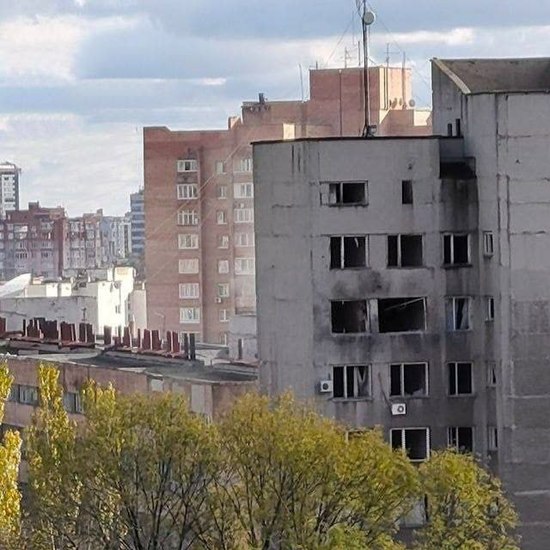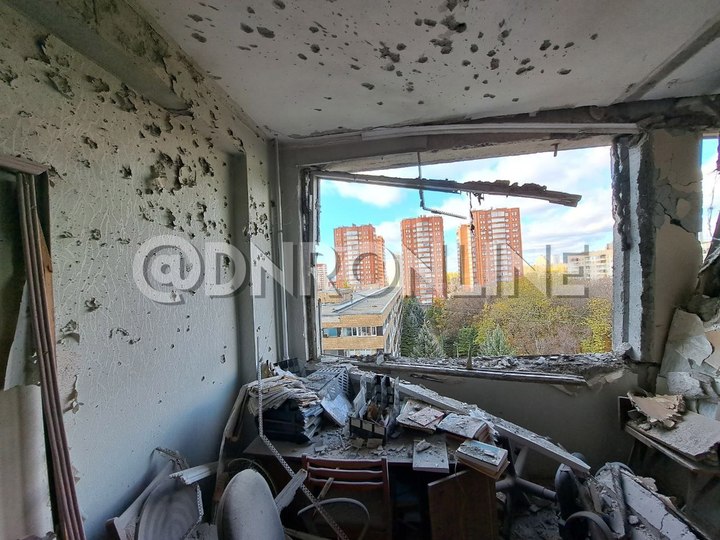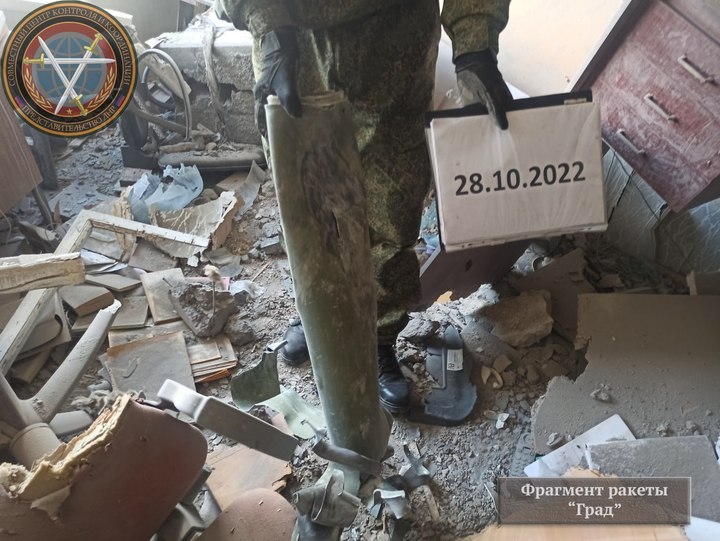Grad arrived for mathematicians, botanists wrapped palm trees with curtains: how Donetsk scientists survive
[ad_1]
The issues of reintegration of the annexed territories in the Russian Academy of Sciences are supervised by the Deputy President of the Russian Academy of Sciences, Scientific Director of the Southern Scientific Center of the Russian Academy of Sciences, Academician Gennady Matishov.
– Back in the days of the policy of good neighborliness between our countries, the chairman of the National Academy of Sciences of Ukraine, Borys Paton (he passed away in 2020), spoke with regret about interaction with the Russian scientific sphere as follows: “Today our ties are weakened to a symbolic level,” recalls Gennady Grigorievich . “Unfortunately, at that time we did not use the chance for reintegration.
And after 2014, it became difficult to build any bridges at all. Although Ukrainian academic colleagues sometimes came to us. For example, in 2019, a well-known historian, academician of the National Academy of Sciences of Ukraine Petr Tolochko made a report at our Presidium.
Now that the DPR, LPR, Kherson and Zaporozhye regions have become part of Russia, we must help their institutes and universities to get on their feet as soon as possible, to join our large scientific family. Most of the institutes have been concentrated in Donetsk since Soviet times. Metallurgy, mechanical engineering, and the chemical industry developed there, and the USSR Academy of Sciences at one time decided to create a number of scientific institutes to support industrialists. But today we must understand that much has changed in these institutions.
According to the curator, the institutions of Donetsk, which can rightly be considered the scientific capital of Donbass, developed more or less safely before the outbreak of hostilities in 2014. Despite the outflow of personnel abroad, which was outlined even earlier, due to a decrease in funding (especially during the tenure of Prime Minister Arseniy Yatsenyuk), at least peaceful neighborhoods were not fired upon.
Well, after 2014, many scientific institutes that used to be part of the National Academy of Sciences lost some of their employees … They decided to leave, especially since the Kiev leadership of the academy promised them help with employment. Those who decided to stay were accepted as part of their research institutes by the Ministry of Science of the DPR and other relevant ministries and departments.

“Nobody can allocate glass to us”
Currently, there are eight institutes of a fundamental direction in the republic (all of them are under the Ministry of Education and Science of the DPR), seven institutes of an applied nature, which were taken under the wing of the Ministry of Industry, and two research institutes of a scientific and organizational profile, which were included in the structure of the government.
I managed to get through to the heads of several leading Donetsk scientific organizations. Three of them are located in the very center of the city, on Rosa Luxembourg Street – this is the State Budgetary Institution “Donetsk Institute of Physics and Technology named after I.I. A.A. Galkina, GBU Institute of Applied Mathematics and Mechanics, and GBU Institute of Physical Organic Chemistry and Coal Chemistry. L.M. Litvinenko.”
– We are now a little short of science, – says Sergei Sudakov, Acting Director of the Mathematical Institute, with restraint. – We had a nuisance last Friday – a Ukrainian “Grad” flew into one of the windows, did a lot of things … There is a lot of work to be done to repair it.
As it turns out, no one can allocate glass to them yet, there is a problem with glass in the city, it is primarily sent for glazing residential buildings. So for the near future, scientists can only hope for the film.
“We will manage somehow on our own,” Sudakov says. It is not easy, despite the fact that there are only … nine people left at the institute. The remaining 140 chose to evacuate: some to Ukraine, some to Russia.
I ask how things are in other research institutes.
– The Donetsk Fiztekh is located not far from us, and things are not going very well there either, but they are still somehow supported by their own production, because they produce parts for experimental installations.
The same DonFTI them. A.A. Galkin, founded in 1965, is the largest scientific center for fundamental and applied research in the physics of condensed states, physics and technology of promising materials with desired properties. According to the data provided to the Deputy President of the Russian Academy of Sciences Gennady Matishov by his director Irina Reshidova, there are much more specialists working here than mathematicians – 235 people. Among them are 120 researchers, 19 doctors and 48 candidates of sciences. The Institute of Physics and Technology managed to maintain a multifunctional line for the production of nanopowders, a unique X-ray camera for studying substances in extreme states.
If you think that only explosions threatened Donetsk institutions, you are mistaken. During the move to Ukrainian territory, former employees tried to take equipment out of some scientific organizations.
This is the story that Mikhail Savoskin, the current head of the Institute of Physical Organic Chemistry and Coal Chemistry, told us.
– Before leaving in December 14, the director gathered those who remained and said: “I am moving the institute to Kyiv.” We discussed this issue, and the people said: “Well, go!”. Those who went to Ukraine with him tried to take valuable equipment and reagents with them. They were not allowed to do this – the DPR authorities posted armed guards at the entrance.
– It turns out that in Kyiv your institute has a double with the same name?
– Yes, only they have to rent laboratories in Kyiv institutes.
– How many of you now?
– After the departure of colleagues, 120 people out of 260 remained – less than half. But during the eight years of the war, the institute accepted and trained dozens of young talented employees, and now our number is 150 people.
– What is the institute doing now?
– By what is written in our Charter: the study of the mechanisms of organic reactions, the synthesis of biologically active substances, the study of the chemistry of coal and carbon products. Thus, in particular, new surfactants have been synthesized, the addition of which to the reaction mass increases the reaction rate by hundreds and thousands of times. New promising compounds have been synthesized that make it possible to provide effective first aid for strokes and reduce the consequences of this terrible disease. In cooperation with Donetsk doctors, these drugs are being tested on laboratory animals.
The institute also works in the field of obtaining carbon nanoparticles – graphenes, nanotubes, nanoscrolls. The Institute was greatly assisted by the Southern Federal University, which has provided us with liquid helium all these years. This made it possible to maintain and successfully operate our nuclear magnetic resonance spectrometer.
Recently, the Ministry of Science and Higher Education of the Russian Federation asked us to compile a list of the institute’s achievements in recent years. It turned out one and a half pages – I read it and was surprised myself how much we were able to achieve.
– Didn’t the shells come to you?
– For 8 years, starting from 2014, our area was shelled regularly, but, fortunately, the building itself was not hit. I remember how a shell exploded 30 meters from the entrance to the institute, and in 2015 it hit cooperative garages located 20 meters from the building.
Physicists and mathematicians, located next to us, were less fortunate. DonPhystech once had its roof damaged by an explosion, mathematicians flew through the Grad window last Friday.
We have the oldest institute of RANIMI in our city – the Republican Academic Research and Design Institute of Mining Geology, Geomechanics, Geophysics and Mine Surveying. It was founded in 1926 (!) year. So in 2022 it is being shelled very often.

– What is a surveying business?
– Underground geodesy. Their specialists determine where and how it is possible to carry out sinking and extract coal, where it is impossible.
– How do you generally perceive reintegration with Russia?
– Yes, finally! For eight years we had no idea what. In the 14-15 years they were shelled heavily, now the center gets a lot. We hope that the merger with Russia will protect us.
– And how did you live before the age of 14?
– It was evident that Ukraine was not turning in the direction we would like: deindustrialization was taking place. I used to work with Yuzhmash, and then everything stopped. A serious firm was practically destroyed. Yes, and Nazism was raising its head – it was evident.
– How many of your colleagues, neighbors share your opinion?
– For us, who remained on Donetsk soil after 2014, there is basically unanimity on this issue. Of course, we want the shelling to stop, so that we can get to work not in small dashes. And then they bang all the time.
Help “MK”. Fundamental profile institutes of the DPR:
DonPhystech, Institute of Applied Mathematics and Mechanics, Institute of Physical-Organic Chemistry and Coal Chemistry. L.M. Litvinenko, RANIMI, Botanical Garden, Institute of Physics of Mining Processes, Institute of Economics and Industry, Research Institute “Reaktiv Electron”.
“Mina fell two meters away”
Another scientific organization that manages to work under fire is the Donetsk Botanical Garden. I am talking on the phone with director Svetlana Prikhodko.
– We work with living plants, we do not have the opportunity to do this remotely or close for a while, – says Svetlana Anatolyevna. – The Botanical Garden lives, despite everything, preserves all the collections and even develops.
– Your colleagues said that shells also flew into the garden …
– Yes, there were shellings. In July 2014, shrapnel slightly damaged the coating of greenhouses. In 2015, there was a very serious explosion – a 120-caliber mine fell two meters from the laboratory and administrative building, windows and doors flew out, scientific equipment was damaged, the glazing of the greenhouse where lemon trees grow, which are more than 30 years old, was seriously damaged. This happened in February, the frost was 19 degrees, but, fortunately, the plants were not affected – we promptly restored the glazing on our own.
Then there was a powerful explosion near the garden in 2017. This time, the polycarbonate coating was torn off by an explosive wave, the wall of one of the greenhouses moved away. While it was being repaired, the plants were covered with all available fabrics: curtains, blankets. For two days our collection of humid equatorial forests stood wrapped up, but nothing, ficuses, palms, creepers, and the most cold-sensitive ferns survived.
– Were you bombed this year?
– One shell flew into the territory in the spring, but, fortunately, did not explode.

– You said that the Botanical Garden manages to develop new directions. Tell us more about them.
– Back in 2016, we opened a new direction related to the study of bioinvasion in terrestrial and aquatic ecosystems. It studies plants and insect invaders. The second direction is connected with the revival of the soil-ecological laboratory within the walls of our Botanical Garden, since the only laboratory in the Donbass that studied soils was destroyed on Sands. We understood the importance of research in this direction, and began to revive it. Now the instrument base has been updated.
Are you afraid to work outdoors? Do you use bulletproof vests or helmets?
– Of course, I understand that far from the war, it seems to you that we live here in a slightly different way. But, believe me, we walk here without equipment. Our garden is very beautiful, there are many flowers, we even wear heels to work. And body armor is more needed now for our defenders.
According to Gennady Matishov, the institutes of the new territories are planned to be attached to the Russian Ministry of Science and Higher Education of the Russian Federation from the new year. Accordingly, from now on, the RAS will begin to exercise their scientific and methodological guidance.
– We worked out a similar scheme when we annexed Crimea, – says the academician. – A very important point – all employees of Donetsk, Luhansk, Kherson and Zaporozhye institutes who were members of the National Academy of Sciences of Ukraine, our state, represented by the Russian Academy of Sciences, will provide the opportunity to be elected to the ranks of the Russian Academy of Sciences.
By the way, representatives of the Russian specialized Ministry of Science and Higher Education have already appointed curators of institutes located in the territories annexed to the Russian Federation. However, we were unable to contact them for comment.
[ad_2]
Source link








